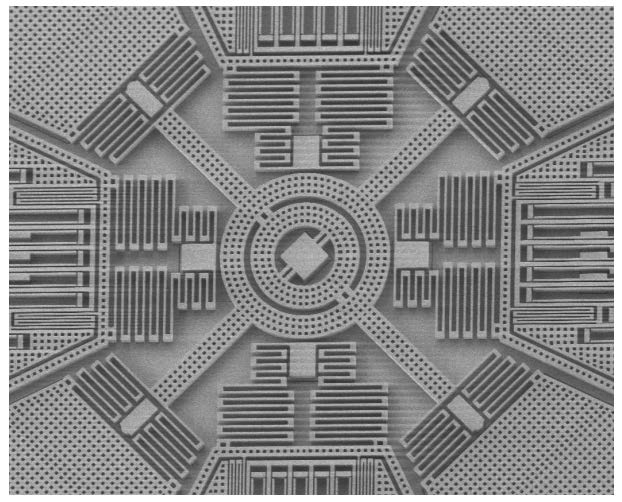What are MEMS?
“MEMS” is an acronym standing for Micro-Electro-Mechanical Systems. These are tiny mechanical devices which are made in integrated circuit (IC) factories. When the technologies for electronic chips were developed, there was an unanticipated parallel benefit: the ability to precisely manufacture mechanical devices with very small features.
The celebrated physicist Richard Feynmann may have had the original idea. In his 1959 lecture entitled There’s Plenty of Room at the Bottom, Feynmann asked, “What would happen if we could arrange the atoms one by one the way we want them?”
While it is still hard to make useful things on an atom-by-atom basis, MEMS at a somewhat larger scale has taken off commercially.
Commercial success of MEMS as described by a MEMS expert witness
Silicon, whose electronic versatility powered a revolution in electronics and computing, fortunately happens to also be an extremely good material for building micro-machines. Silicon supports highly repeatable motion and does not fatigue. Silicon MEMS devices are made using the same lithographic printing techniques as ICs, and are easily connected to micro-circuitry. Trillions of dollars have been invested in semiconductor manufacturing over the last 50 years. MEMS products build on that giant accumulation of technological capability.

Many MEMS devices behave as the “eyes and ears” of other systems. They are sensors of the environment. They are found in a broad range of products today, for example:
- Automobiles: MEMS devices control air-bags, sense tire pressures, enable dynamic stability control, yaw rate control and anti-lock brakes.
- The best movie theaters create the image on the screen with an array of MEMS micro-mirrors.
- A cell phone contains a large number of MEMS devices. Gyroscopes, accelerometers and magnetometers are all standard issue. The microphone is usually MEMS, and the loudspeaker and camera lens soon will be. Conflicting national regulations require a phone to transmit and receive signals in a dizzyingly diverse set of frequency bands. These are enabled by MEMS filters.
The MEMS market in 2024 is estimated at over $16 billion, with a CAGR of around 8%. Five companies currently dominate: these are Broadcom, Bosch, STMicroelectronics, Texas Instruments and Qorvo.
MEMS Litigation
With significant dollar amounts at stake, litigation around MEMS intellectual property has proceeded briskly and has required the employment of MEMs expert witnesses. STMicroelectronics v. Invensense involved two of the largest players in an action concerning motion controllers found in video games, cameras, television remote controls, and the like. Knowles, MEMSTech, Analog Devices (ADI), and Akustica (now owned by Bosch) had a dispute between 2006 and 2011 over MEMS microphone patents—see, for example, Knowles v. Analog Devices. Due to the highly global nature of semiconductor manufacturing, a number of these are “337” actions at the United States International Trade Commission (ITC).
References
STMicroelectronics, Inc., v. Invensense Inc., 3:12-cv-02475 (United States District Court for the Northern District of California, May 16, 2012).
Knowles Electronics, LLC v. Analog Devices, Inc., 1:09-cv-06238 (United States District Court for the Northern District of Illinois, October 06, 2009).
Leave a Reply